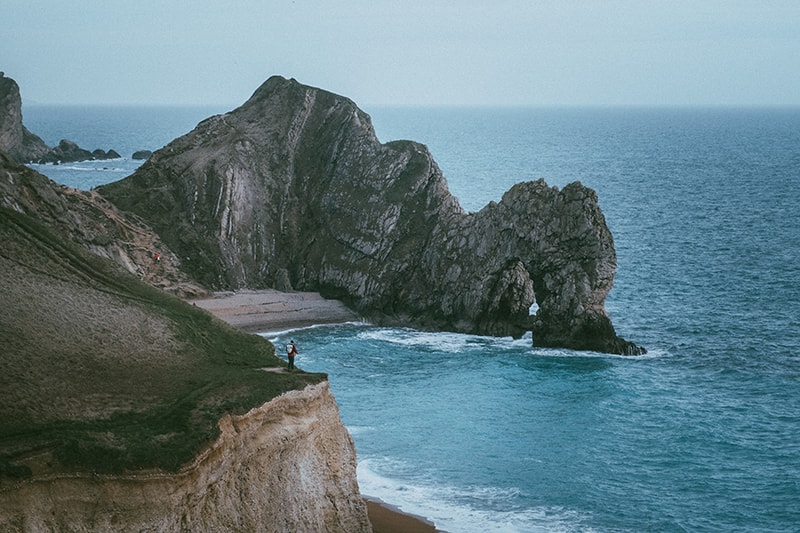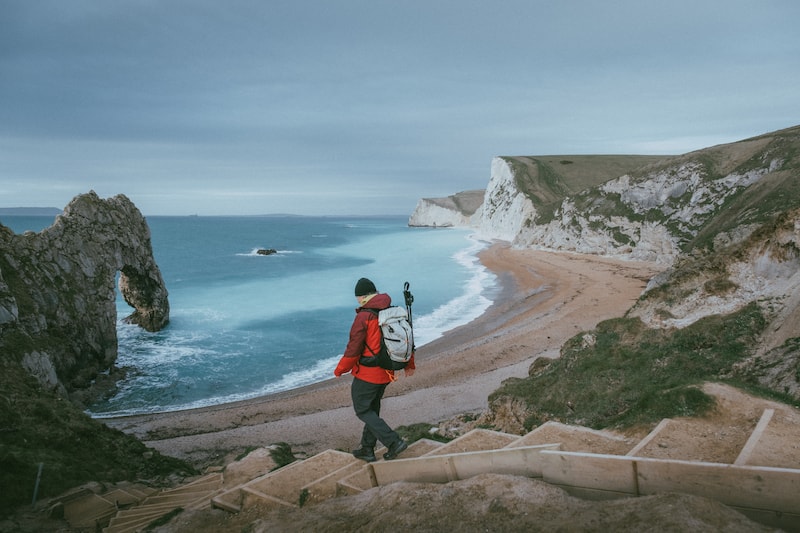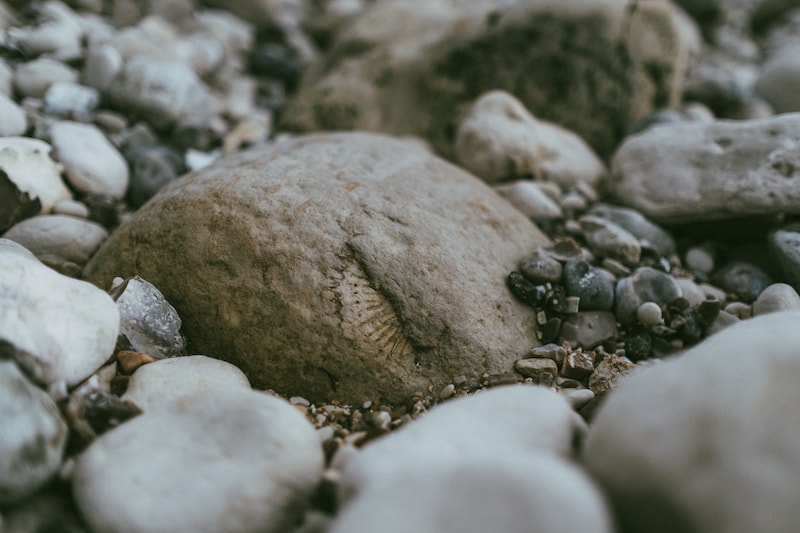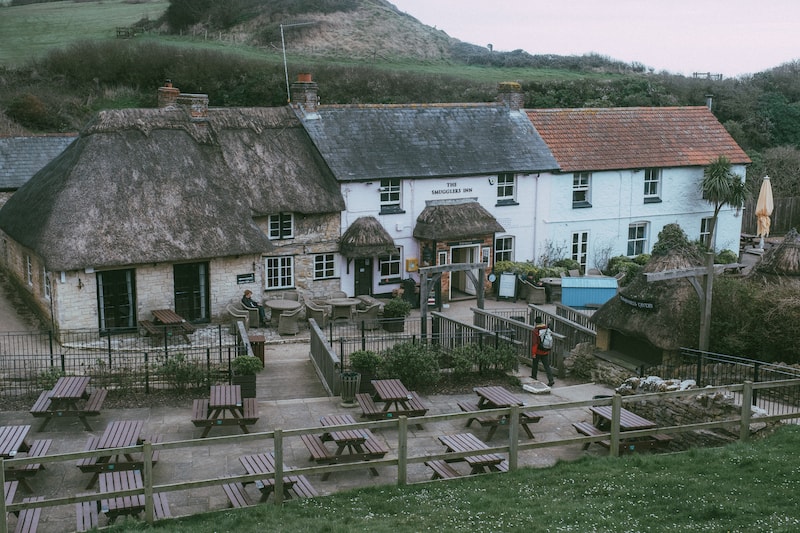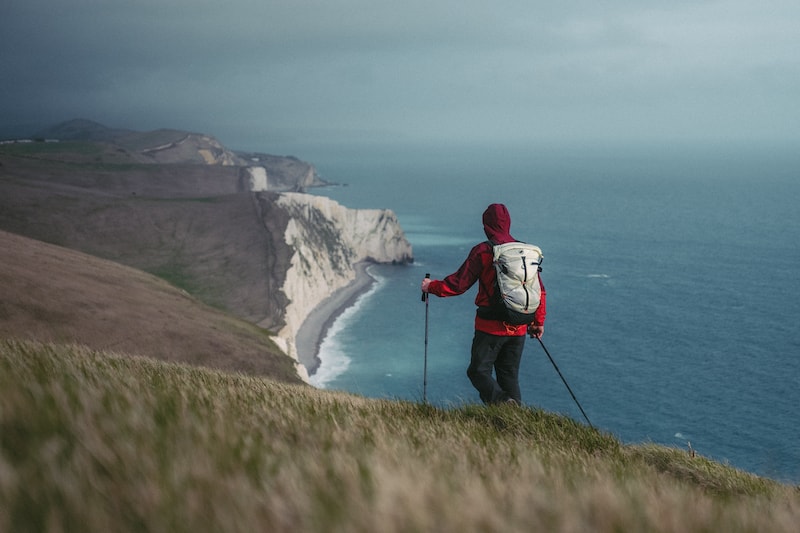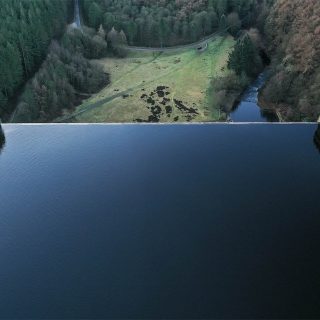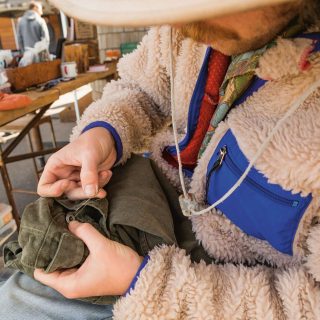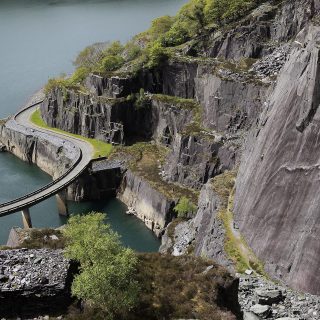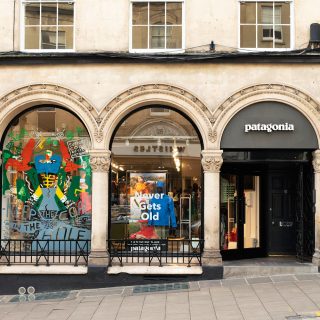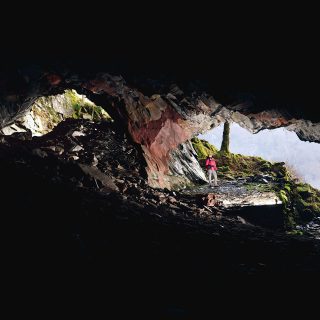Content Marketing: Exploring The Jurassic Coast
We collaborated with veteran walking guide writer, Ronald Turnbull and outdoor photographer, Pete Elliott to create a long-form story for Mammut UK that explores the rich history, stunning scenery and secret smugglers’ routes of the Jurassic Coast.
Words by Ronald Turnbull. Photography by Pete Elliott.
Named for its richness in ancient fossils, the Jurassic Coast’s beauty has also been the inspiration for works of fiction and is the real life setting of some old smugglers tales. We sent Cicerone Walking Guides author and Jurassic Coast expert, Ronald Turnbull, along with local outdoor photographer Pete Elliott to show us the towering white cliffs above, the ancient fossils beneath and the secret smuggler routes of the coastal paths.
Beginning at Lulworth Cove
Just after sunrise on the Dorset coast – a grey early-Spring day, and a cold wind blowing. The fantastic sea-arch of Durdle Door stands against a steely blue sea. But in against the biscuit-coloured beach, the waves are an unlikely turquoise blue. If I saw it in a photograph, I’d think the photographer had been overdoing it a bit in the post-processing. But that explanation won’t do for real life… It takes a moment to work out that somewhere around the corner the sea must be rinsing through the debris of a recent rockfall, and re-colouring itself with chalk dust.
The Jurassic Coast is the UK’s longest, and third-thinnest, World Heritage Site. Its 154km of coastline offer airy clifftops, grassy downland, and cunning little coves miles from the tarmac road. A waymarked path with National Trail status, part of the 1000km South West Coast Path, runs along it from end to end. Inland, the chalk downland has a network of grassy bridleways, offering the same huge sea views from slightly further away and a hundred metres higher up. Combine coast with downland for an out-and-back that can be any length you like. Today’s plan was to cover the coastline’s most exhilarating section, the high chalk cliffs between Lulworth Cove and Osmington. The downland, though higher up in elevation, has less up and down than the coast path, so it’s the easy bit of the out-and-back walk. The miles slip away on the grassy paths, with the grey sea stretching to the paler grey hump that’s the almost-island of Portland low against the sky.
The Smugglers’ Inn at Osmington
The signboard of the Smugglers’ Inn at Osmington is a 20th-century invention. Emmanuel Charles and French Pete, who ran their operation from here in the 1790s, were far too sensible smugglers to give it such an obvious name.
“The salt-blistered old sea dog behind the bar passes on legends of the smugglers”
But even when known as The Crown, its low-hanging thatch, oaken beams, and little sunken windows looking straight out to sea, all mean it couldn’t possibly be anything else. Emmanuel’s brandy, they say, was so harsh and poisonous that no-one from the village would drink the stuff. We play it safe and stick to the beer.
Meanwhile the salt-blistered old sea dog behind the bar passes on legends of the smugglers in a Dorset accent rough enough to strip off barnacles. Except that as this is the 21st century, the person behind the bar is hardly sea-blistered at all as she passes on the legends in the convenient form of seven photocopied A4 sheets. We sit below a poster offering us £500 if we have information leading to the capture of French Pete or his ship…
Subscribe to our newsletter
Read the full story Jurassic Coast Walk: Explore Lulworth Cove, Durdle Door & White Nothe on the Mammut website.
Or take a look at the other pieces of content marketing we’ve worked on for Mammut.
- Ski Touring in the Scottish Highlands
- Peak District Aircraft Wrecks
- Historical Hadrian’s Wall Walk
- Munro Bagging from a Glen Coe Mountain Bothy
- Climbing in Glen Clova
- The Howden, Derwent & Ladybower Reservoir
- Scrambling Crib Goch and the Snowdon Horseshoe
- Smuggling Routes of the Lake District
- Climbing Llanberis Slate Quarries
